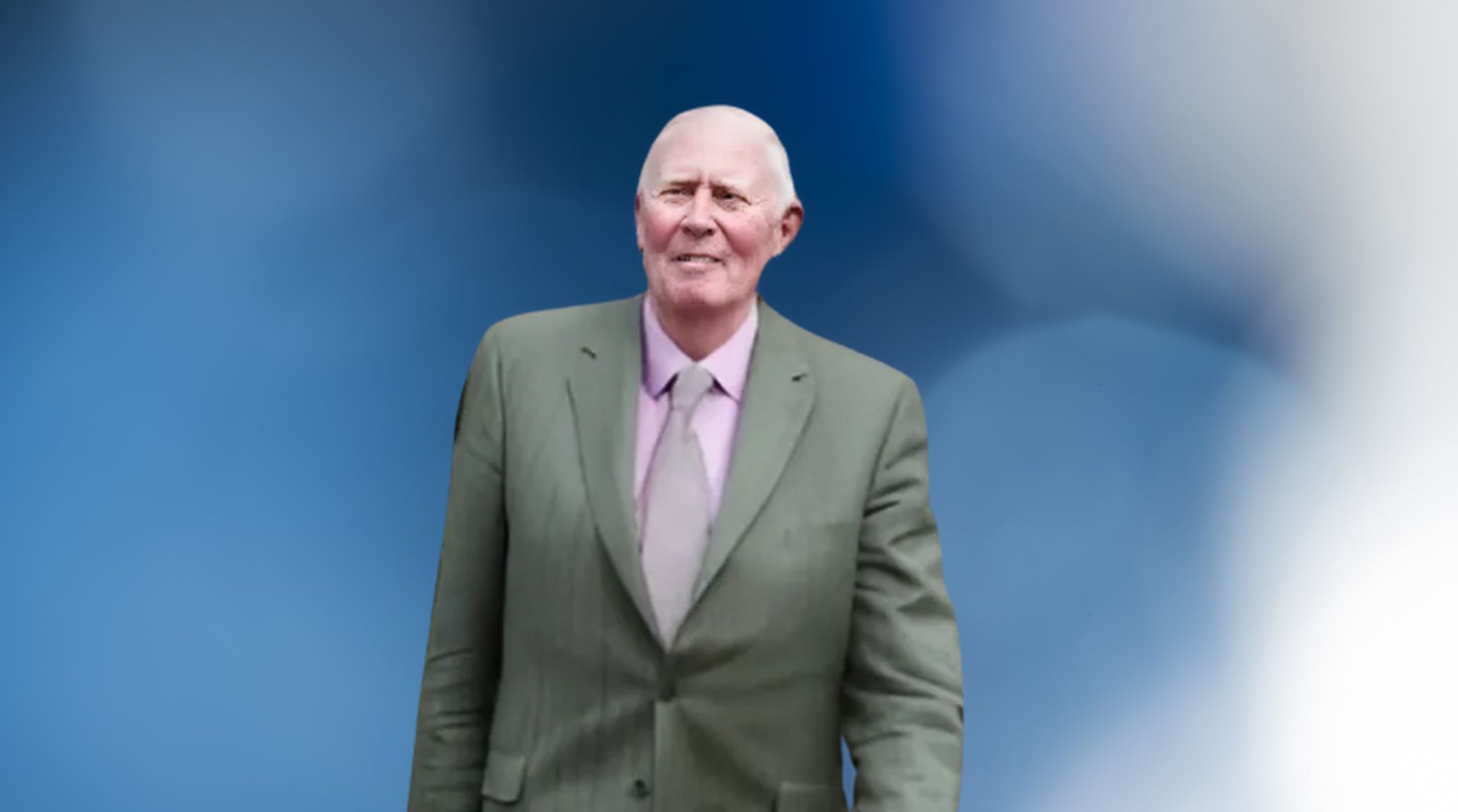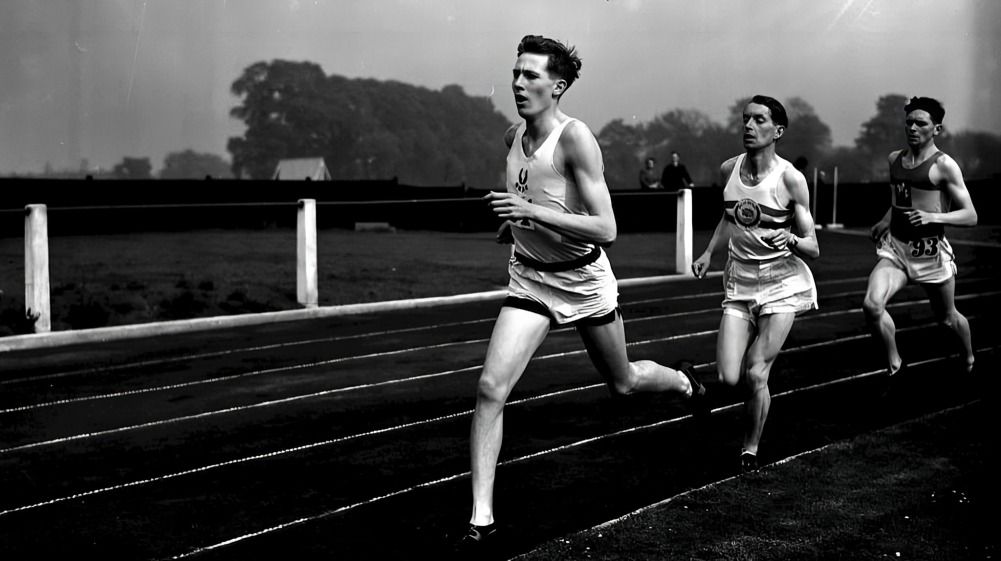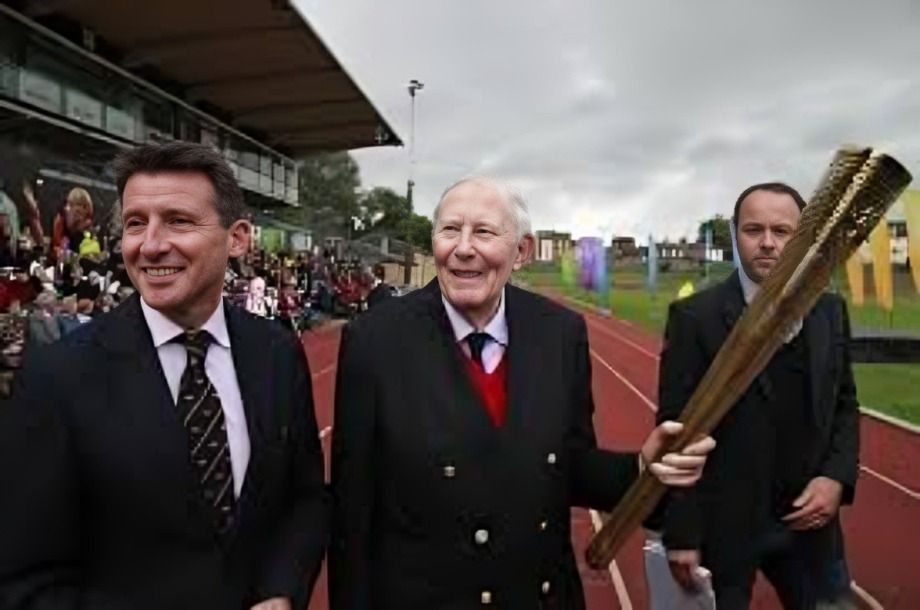
“
Roger Bannister made history on May 6, 1954, by becoming the first person to break the 4-minute mile, a feat that was once considered impossible. His incredible achievement changed the world of athletics and inspired countless athletes to challenge their own limits. But Bannister’s life was more than just about running. Beyond his athletic career, he became a respected neurologist and left a lasting legacy in both sports and medicine. In this blog, we’ll explore 20 fascinating facts about Roger Bannister’s life and extraordinary contributions.1
1
”
Roger Bannister was the first person to break the 4-minute mile barrier, achieving the feat on May 6, 1954, with a time of 3:59.4, a moment that changed the history of athletics forever. 1
Bannister's record-breaking run took place at the Iffley Road track in Oxford, England, and was witnessed by a small crowd of just 1,500 spectators, making it an intimate yet iconic moment in sports history. 2
Despite being a medical student at the time, Bannister was able to balance his academic pursuits with elite athletic training, a testament to his discipline and determination to excel in both areas. 3
Bannister's breakthrough in the 4-minute mile was part of a fierce rivalry with Australian runner John Landy, who would soon break the record himself. The two would eventually race against each other in 1954. 4

Roger Bannister's training was unconventional for his time. He emphasized interval training and focused on building mental resilience, methods that were groundbreaking and later adopted by future generations of athletes.
Bannister's 4-minute mile was a long-standing symbol of human physical limits. After his record was broken, it was revealed that many athletes had come close to the barrier but had been unable to surpass it. 5
Bannister broke the 4-minute mile when he was just 25 years old. This achievement led to an explosion of interest in middle-distance running, and many runners soon followed in his footsteps, breaking the 4-minute barrier. 6
Roger Bannister's run did not initially receive the fanfare it would later achieve. It was considered just another milestone until it became clear that it was a breakthrough moment for the entire world of athletics. 7
After his historic achievement, Bannister retired from competitive athletics to focus on his medical career. He later became a renowned neurologist and contributed significantly to the field of medical research and treatment. 8

Bannister's legacy as a runner is inseparable from his dedication to sportsmanship. He believed that breaking the 4-minute mile was a result of human determination rather than natural-born talent alone.
On the day he broke the 4-minute mile, Bannister was paced by two fellow athletes, Chris Chataway and Chris Brasher, who played key roles in ensuring he maintained the speed necessary to achieve the goal. 9
Bannister was knighted by Queen Elizabeth II in 1975 for his services to sport and medicine, further cementing his legacy as both a groundbreaking athlete and a respected medical professional. 10
Although his 4-minute mile record was eventually surpassed, Bannister's achievement remains one of the most significant moments in the history of track and field, inspiring athletes worldwide to aim higher and push boundaries. 11
Bannister’s approach to mental focus was as innovative as his physical training. He understood the psychological aspects of breaking barriers, preparing himself to fight through pain and discomfort during his record-breaking run. 12

While Bannister’s achievement was groundbreaking, he was initially reluctant to claim full credit. He often downplayed the significance of the record, attributing it more to the work of others who helped him achieve it.
Roger Bannister went on to serve as the president of the British Medical Association, using his platform to champion medical ethics, sports science, and the importance of integrating athletic pursuits with healthy living. 13
After his career in athletics, Bannister kept a low profile in the world of sports media, preferring to focus on his medical work and personal life. His humility set him apart from many sports celebrities. 14
Bannister’s interest in running developed as a teenager, and it was initially a way to stay fit for rugby and other sports. He quickly realized his natural talent for middle-distance running, excelling in this discipline. 15
Following his retirement from running, Bannister’s life remained full of accomplishments. He became an expert on the brain’s role in athletic performance, contributing to studies on physical limits and neurological functions. 16
Roger Bannister's 4-minute mile was a symbol of human achievement, but he never saw it as a personal victory alone. He considered it part of a collective effort to push human performance to new levels.17


